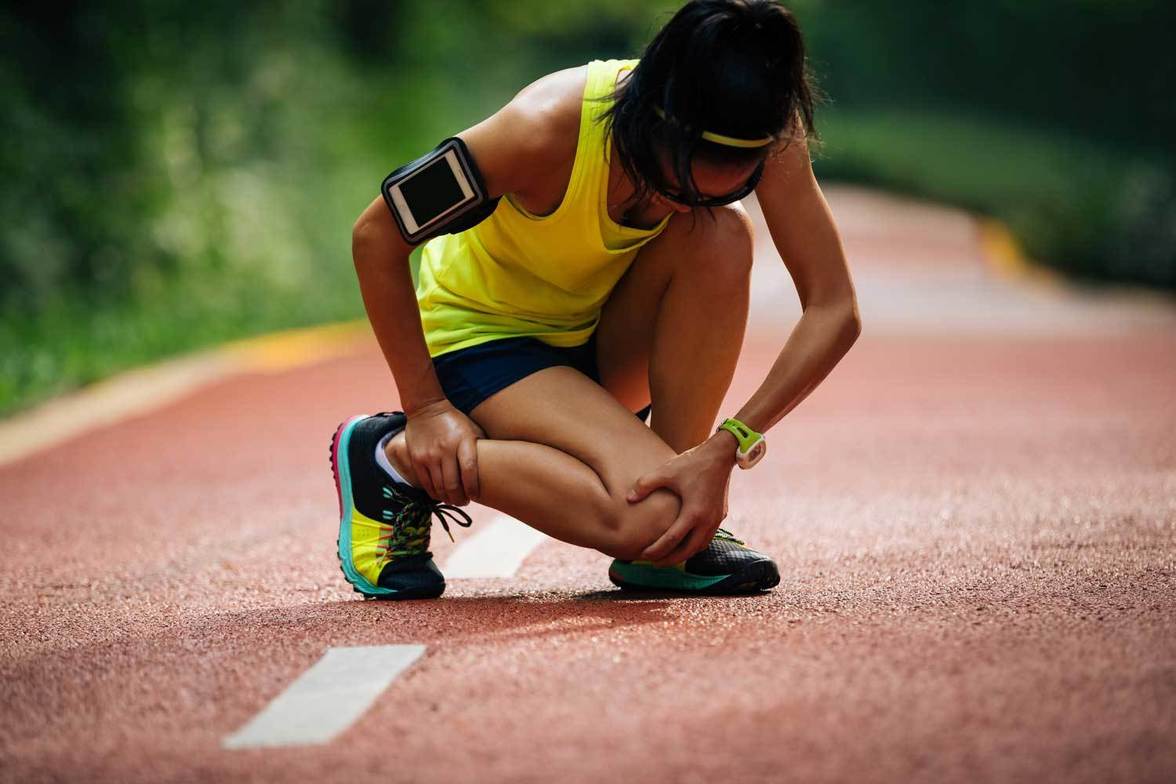
Running is a great way to stay in shape, reduce stress, and push yourself to do better. But sometimes, runners get hurt. Whether you are just starting or have been running for years, injuries can slow you down or even stop you from running. Approximately 80% of runners will suffer from a running-related injury during the year. The most common injuries are caused by the repetitive nature of running and are classified as overuse injuries.
By learning about these common injuries—what they are and why they happen—you can take steps to stay healthy and keep running. More importantly, by learning and adapting, we can be 1% better every day, taking action toward a healthier and stronger version of ourselves.
Plantar Fasciitis
What It Is: Plantar fasciitis happens when the thick band of tissue (the plantar fascia) on the bottom of your foot gets inflamed. This band connects your heel to your toes.
Why It Happens: Over running, wearing shoes without support, or having tight calf muscles can strain the plantar fascia. Running on hard surfaces or increasing your running distance too quickly can also cause this problem.
Symptoms: A sharp pain in the heel, especially in the morning or after sitting for a long time. The pain may get better with movement but can come back after running or walking a lot.
Achilles Tendinitis
What It Is: Achilles tendinitis is when the Achilles tendon, which connects your calf muscles to your heel, gets inflamed.
Why It Happens: This happens when you put too much stress on the tendon, have tight calf muscles, suddenly start running more, or wear shoes that don’t give enough support.
Symptoms: Pain and stiffness in the back of your ankle, especially in the morning or after exercise. The area might also be swollen or tender to the touch.
Runner’s Knee (Patellofemoral Pain Syndrome)
What It Is: Runner’s knee is pain around the kneecap caused by irritation of the cartilage underneath it.
Why It Happens: Weak quads like the vastus medialis oblique (VMO), overuse, bad running form, or running too much downhill can lead to runner’s knee. Weak hips and glutes can also make it worse.
Symptoms: A dull, aching pain around or behind the kneecap. It may hurt more when going up or down stairs, squatting, or sitting for a long time.
Iliotibial (IT) Band Syndrome
What It Is: IT band syndrome happens when the thick band of tissue on the outside of your leg (from your hip to your knee) gets irritated and inflamed.
Why It Happens: Weak hip muscles leading to over pronating the foot, running too much, bad running form, and running downhill a lot can cause this injury. A tight IT band can also pull on your knee, making the pain worse.
Symptoms: Sharp pain on the outside of the knee that gets worse while running, especially when going downhill. The pain might start as a small ache but can become more painful over time.
Shin Splints
What It Is: Shin splints happen when the muscles, tendons, and bone tissue around the shinbone become inflamed.
Why It Happens: Over running, wearing the wrong shoes, or rove running on hard surfaces with the wrong mechanics can cause shin splints. Weak leg muscles and not warming up properly can also make it worse.
Symptoms: Pain and tenderness along the front of the lower leg. The pain may feel worse at the start of a run and ease up but can become more intense over time. After running it may feel challenging to keep your toes up while walking.
The Power of Being 1% Better Every Day
Knowing about these injuries is the first step, but what really matters is taking action. By doing strength exercises, warming up properly, and slowly increasing your running distance, you can avoid injuries and improve as a runner. Running isn’t just about going fast or far—it’s about learning, growing, and getting better every day. Small changes can make a big difference over time.
So, let’s work on being 1% better every day—not just in running, but in everything we do. Lace up your shoes, stay focused, and keep moving forward!

Dr. Ryan A. DiPrimo
Contact Me



